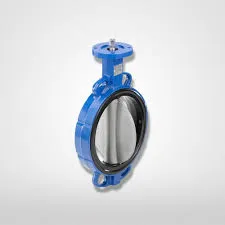Dec . 15, 2024 16:31 Back to list
double swing check valve
Understanding Double Swing Check Valves A Comprehensive Overview
Double swing check valves are essential components in various fluid control systems. These devices are specifically designed to allow flow in one direction while preventing backflow, ensuring the efficiency and safety of piping systems. In this article, we will dive into the design, functionality, applications, and benefits of double swing check valves, providing a thorough understanding of these critical devices.
Design and Functionality
A double swing check valve consists of two hinged discs that swing open to allow liquid or gas to flow through the valve in one direction. When the fluid attempts to flow back, the discs swing closed against the valve body, creating a tight seal that prevents reverse flow. This mechanism is particularly effective in high-flow applications where pressure fluctuations may occur.
The valve body is usually made of durable materials such as cast iron, stainless steel, or PVC, depending on the application and the nature of the fluid being conveyed. The double-swing design allows for lower pressure drops across the valve compared to traditional single disc check valves, making it suitable for applications where maintaining flow efficiency is critical.
Applications
Double swing check valves are used in a wide range of applications across various industries, including
1. Water and Wastewater Management These valves are commonly found in water treatment facilities, sewage systems, and stormwater management systems, where they prevent backflow and protect the integrity of the piping network.
2. Oil and Gas Industry In pipelines transporting crude oil, natural gas, and other hydrocarbons, double swing check valves help maintain the direction of flow and ensure safety in case of pressure surges.
3. Power Generation In power plants, these valves are used in cooling systems, steam lines, and condensate systems to ensure that flow is directed appropriately and to prevent any backflow that could lead to equipment damage.
double swing check valve

Advantages of Double Swing Check Valves
The popularity of double swing check valves stems from numerous benefits they offer
1. Low Pressure Drop Compared to single disc check valves, double swing check valves provide a lower pressure drop due to their design, which minimizes energy loss and enhances overall system efficiency.
2. Durability Constructed from robust materials, these valves can withstand harsh conditions, including high pressures, temperature fluctuations, and corrosive environments, making them a reliable choice for a variety of applications.
3. Operational Reliability The two-disc design ensures a more effective seal against backflow, increasing the reliability of the system. This is particularly important in critical applications, such as those in the water and oil industries.
4. Versatility Double swing check valves are suitable for a variety of fluids, including water, hydrocarbons, and chemical solutions, expanding their usefulness across different sectors.
5. Ease of Maintenance Most double swing check valves are designed for easy inspection and maintenance, allowing for straightforward cleaning and repair, which can enhance their lifespan and performance.
Conclusion
In summary, double swing check valves play a vital role in modern fluid control systems. Their unique design allows for efficient, reliable, and safe operation, making them a favored choice in various industries ranging from water management to oil and gas. With benefits such as low pressure drop, durability, and operational reliability, these valves contribute significantly to the efficiency of industrial processes. As industries continue to evolve and demand higher standards of safety and efficiency, double swing check valves will remain an integral part of fluid control technologies. Understanding their design and applications is crucial for engineers and technicians involved in the installation and maintenance of piping systems.
Whether you are considering the implementation of double swing check valves in a new project or assessing their performance in an existing installation, their importance and advantages cannot be overlooked.
Share
-
Reliable Wafer Type Butterfly Valves for Every IndustryNewsJul.25,2025
-
Reliable Flow Control Begins with the Right Ball Check ValveNewsJul.25,2025
-
Precision Flow Control Starts with Quality ValvesNewsJul.25,2025
-
Industrial Flow Control ReliabilityNewsJul.25,2025
-
Engineered for Efficiency Gate Valves That Power Industrial PerformanceNewsJul.25,2025
-
Empowering Infrastructure Through Quality ManufacturingNewsJul.25,2025